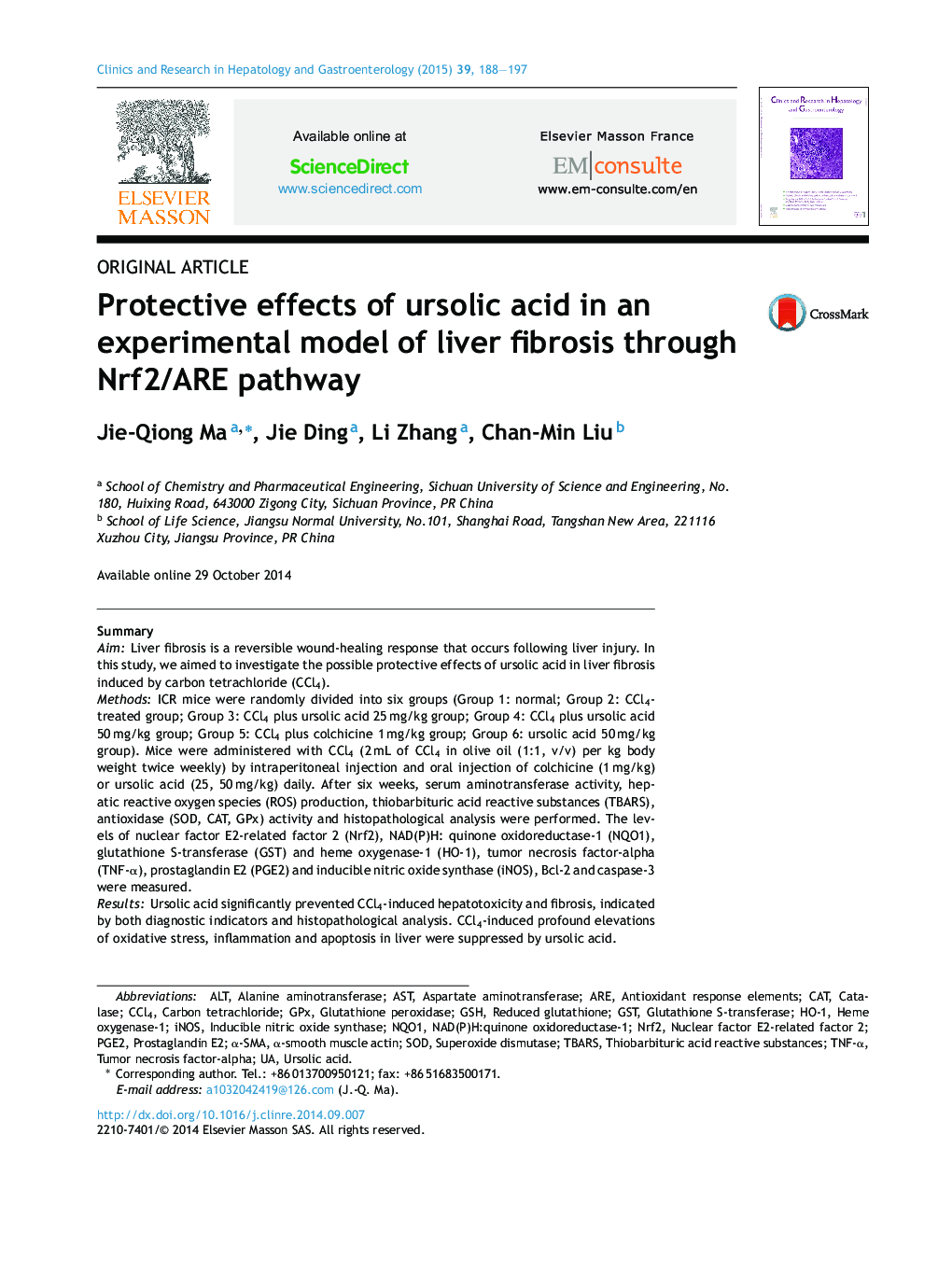| Article ID | Journal | Published Year | Pages | File Type |
|---|---|---|---|---|
| 3286168 | Clinics and Research in Hepatology and Gastroenterology | 2015 | 10 Pages |
SummaryAimLiver fibrosis is a reversible wound-healing response that occurs following liver injury. In this study, we aimed to investigate the possible protective effects of ursolic acid in liver fibrosis induced by carbon tetrachloride (CCl4).MethodsICR mice were randomly divided into six groups (Group 1: normal; Group 2: CCl4-treated group; Group 3: CCl4 plus ursolic acid 25 mg/kg group; Group 4: CCl4 plus ursolic acid 50 mg/kg group; Group 5: CCl4 plus colchicine 1 mg/kg group; Group 6: ursolic acid 50 mg/kg group). Mice were administered with CCl4 (2 mL of CCl4 in olive oil (1:1, v/v) per kg body weight twice weekly) by intraperitoneal injection and oral injection of colchicine (1 mg/kg) or ursolic acid (25, 50 mg/kg) daily. After six weeks, serum aminotransferase activity, hepatic reactive oxygen species (ROS) production, thiobarbituric acid reactive substances (TBARS), antioxidase (SOD, CAT, GPx) activity and histopathological analysis were performed. The levels of nuclear factor E2-related factor 2 (Nrf2), NAD(P)H: quinone oxidoreductase-1 (NQO1), glutathione S-transferase (GST) and heme oxygenase-1 (HO-1), tumor necrosis factor-alpha (TNF-α), prostaglandin E2 (PGE2) and inducible nitric oxide synthase (iNOS), Bcl-2 and caspase-3 were measured.ResultsUrsolic acid significantly prevented CCl4-induced hepatotoxicity and fibrosis, indicated by both diagnostic indicators and histopathological analysis. CCl4-induced profound elevations of oxidative stress, inflammation and apoptosis in liver were suppressed by ursolic acid.ConclusionsThese results suggest that ursolic acid has the hepatoprotective actions. The inhibition of CCl4-induced liver fibrosis, inflammation and apoptosis by ursolic acid is due at least in part to its ability to modulate the Nrf2/ARE signalling pathway.
